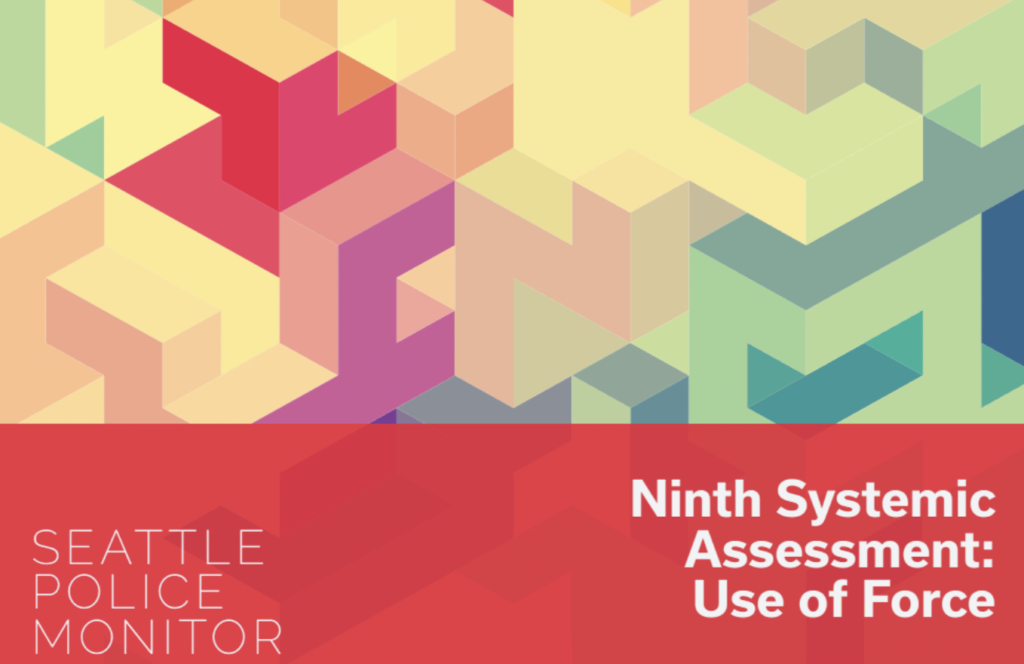What is the ‘Reasonable Officer’ Standard for Police Use of Force?

As part of the Stanford Center for Racial Justice’s ongoing work with public safety, I’ve spent significant time reviewing use of force policies from around the country. While studying these policies, I’ve noticed one phrase come up time and time again: “reasonable officer.”
This phrase is all too common when it comes to police use of force. Lexipol, a national private company that develops police policies and training, embraces the reasonable officer standard and helped draft use of force policies for almost one-third of law enforcement agencies across the nation—including 95 percent of those in California.
When the California Legislature tried to replace the reasonable officer standard in an early version of AB 392—a 2019 law governing the use of deadly force—Lexipol successfully lobbied to keep the standard in place. Although AB 392 now requires the use of deadly force to be “necessary,” whether an officer believed their use of deadly force was necessary is still evaluated by the reasonable officer standard. After the bill passed, Lexipol’s founder said, “When we were dealing with legislators, one of the last things that we, law enforcement, threw in was a qualifier [which] is exactly [the reasonable officer standard].”
But what is the reasonable officer standard?
In 1989, the Supreme Court decided in Graham v. Connor that excessive use of force claims brought against police officers would be evaluated using an “objective reasonableness” standard, taking into account that “police officers are often forced to make split-second judgments.” It was determined that officer use of force should be judged “from the perspective of a reasonable officer on the scene, rather than with the 20/20 vision of hindsight” and “in light of the facts and circumstances confronting them.”
Sounds good enough. Who would be against an objective assessment of any situation, let alone police use of force?
Unfortunately, after decades of application, the reasonable officer standard not only has a lack of clarity on how it is analyzed, but the Supreme Court has mostly failed to provide guidance on what qualities characterize the hypothetical reasonable police officer. Research indicates that while the Supreme Court has used the term “reasonable police officer” in at least seventeen cases, there is no mention of what characteristics define just who a reasonable officer is.
This is important because the use of force standard under Graham directly relies on the “perspective of a reasonable officer on the scene.” However, not being able to clearly identify who a reasonable officer is allows courts and law enforcement agencies to make a determination of reasonableness based not on objectivity, but something commentators have called “subjective objectivity.”
What is subjective objectivity?
Officer use of force is evaluated by a number of entities, including courts but also individual police departments. So, let’s look at how a police department might evaluate the reasonableness of an officer’s use of force.
Under subjective objectivity, the reasonableness of that officer’s actions would be evaluated by the officer’s co-workers or their superiors. It may be viewed by departments to be objective because the evaluation is made from the perspective of someone other than the officer being investigated.
However, that conclusion is flawed. Use of the reasonable officer standard is still subjective because those evaluating the officer are themselves officers. In fact, their assessment is based on a “composite officer” representing the state of policing when force was used. As Washington Post columnist Radley Balko argues, “It’s basically an invitation to let policing be governed by and ultimately only accountable to cop culture.”
Put another way by Columbia University law student Jesse Chang, “the reasonable officer is a construct for a range of acceptable police responses . . . [and] because this evaluation is from the perspective of a police officer, it necessarily incorporates how police officers process the facts and circumstances around them.”
That is, under the reasonable officer standard, the reasonableness of an officer’s use of force is determined by what another reasonable officer would do—problematic because it does not take into account the systemic and institutional biases prevalent in policing.

Why do these police biases matter?
Evidence suggests that not only do police officers generally perceive a high level of threat when interacting with Black, Indigenous, and Latinx people, but that this high perception of threat is correlated with an officer’s increased belief that they need to use force. This analysis is further supported by data that shows under similar circumstances, a police officer is significantly more likely to kill a Black person than a white person. As a result of how the reasonable officer standard is constructed, a police officer may be justified to use force because of a high perception of threat—even when that perception is based on institutionalized racial biases.
Police officers can also make mistakes in high-stress situations. In a study examining 80 police officers who had shot a citizen, researchers found that officers frequently experienced “a wide range of sensory distortions.” These “sensory distortions” include the reduced ability to hear, the perception of some noises to be exceptionally loud, and time distortions such as experiencing slow motion or fast motion during a shooting.
Unfortunately, case law doesn’t instruct courts on how to deal with officer misperceptions in high-stress situations, but the reasonable officer standard nonetheless favors “split-second” use of force decisions. The resulting harm from using the reasonable officer standard is palpable, and disproportionately impacts Black, Indigenous, and Latinx people.
What has happened since Graham?
Ingrid Eagly and Joanna Schwartz, professors of law at UCLA, note that experts agree the reasonable officer standard “imposes no meaningful limits on police powers.” And because the Supreme Court has failed to give any guidance on how to determine who a reasonable officer is, most courts have used the reasonable officer standard to justify exonerating police officers accused of excessive force. The officer who killed 18-year-old Michael Brown, a Black teen in Ferguson, Mo., never faced charges in part because he claimed he had made a “split-second decision about his self-defense.” The same was true for the officers who shot and killed Stephon Clark, a 22-year-old father of two in Sacramento, Calif., who was holding an iPhone.
More than 100 people were shot and killed by police over a period of six weeks in 2021 alone. While the officers’ rationale for using lethal force in each case is different, law enforcement officials defending the officers rely on the reasonable officer standard—even as “many criminologists say the wide latitude under the rule is an obstacle to reducing the number of police killings.”
Why is the reasonable officer standard so important to understand?
Because officer safety and meaningful police reform are not mutually exclusive.
Police departments that have adopted more restrictive use of force policies are making progress towards improving public safety. While most departments still use the reasonable officer standard to evaluate the use of force, they are much more explicit on how much force can be used.

For example, under Seattle’s “necessary” standard, officers are only allowed to use force when no reasonably effective alternative appears to exist. While California AB 392 also uses a “necessary” standard, it’s important to recognize that California law doesn’t define “necessary” like Seattle does. In fact, it doesn’t define “necessary” at all, and nearly identical language to Seattle’s was removed from the original text of the bill. Additionally, when force is authorized in Seattle, officers are only allowed to use it to the degree reasonable to carry out a lawful purpose, such as a legitimate arrest. By contrast, Graham v. Connor—which guides the reasonable officer standard most police departments use—doesn’t define how much force is permissible when an officer does decide to use force.
After Seattle adopted its necessary standard, the city reported a significant reduction in the number of force incidents without a decrease in officer or civilian safety. San Francisco’s adoption of a similar standard—which is “more restrictive than the constitutional standard and state law”—has resulted in a reduction in use of force on civilians by 68 percent, while incidents where officers pulled guns on suspects dropped by 80 percent—all without an increase in the number of officers injured. Results from cities like Seattle and San Francisco are not just promising, but are aligned with evidence indicating that more restrictive use of force policies are associated with a decrease in police killings and a reduction in injuries caused by the police. These ideas can coexist.
Make no mistake about it, being a police officer is incredibly difficult and extremely dangerous. But we can promote safety and reform that produces fairer, clearer, and more equitable outcomes for everyone—and it begins with an unflinching analysis of the reasonable officer standard.
— Hoang Pham
